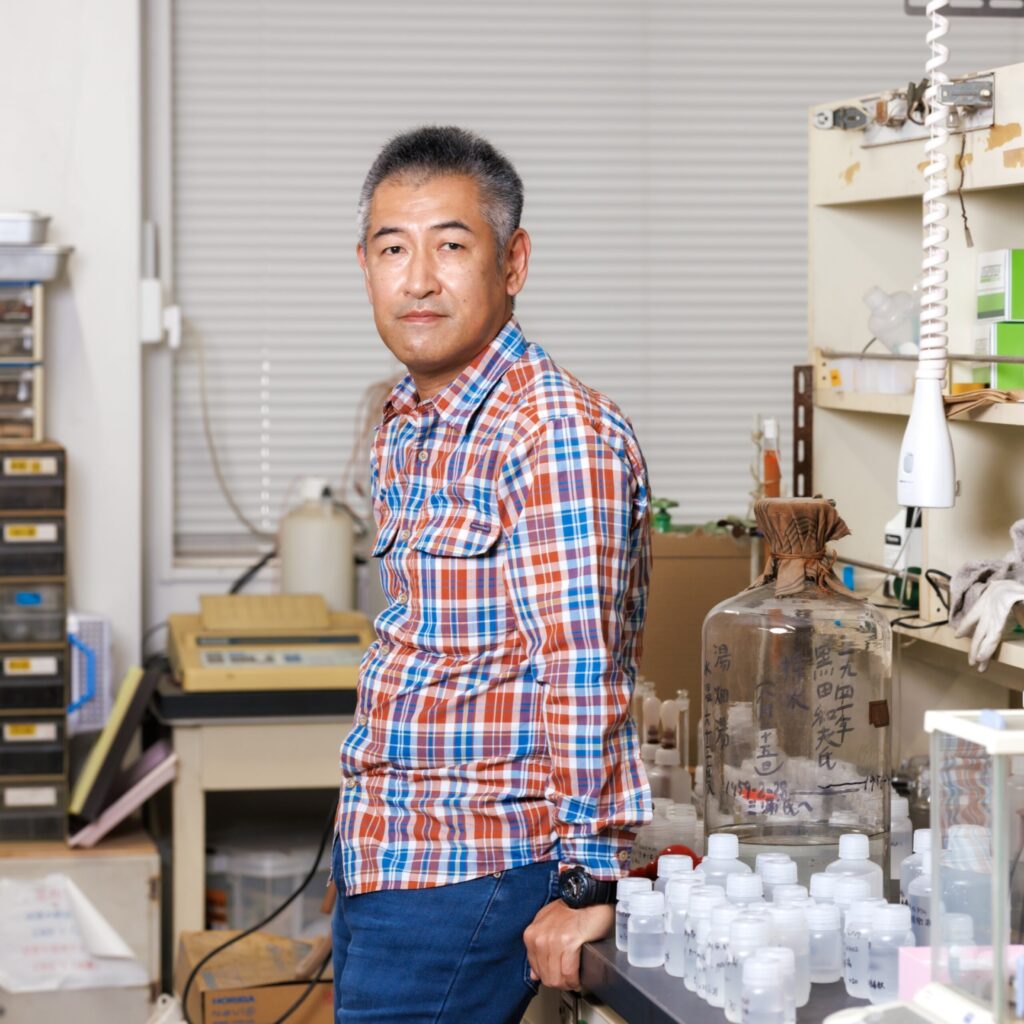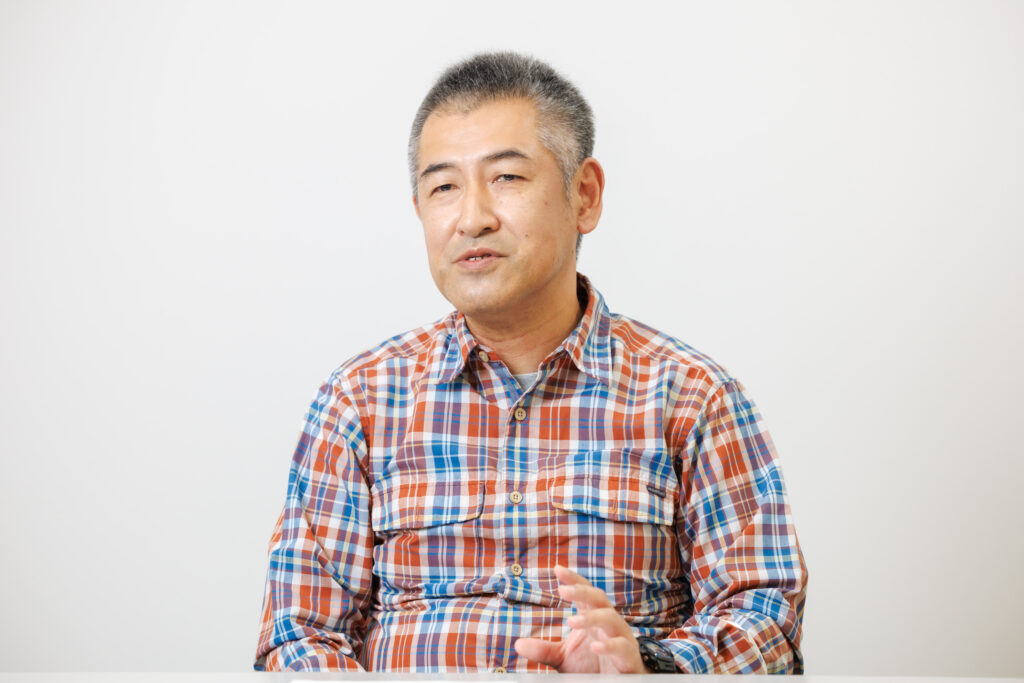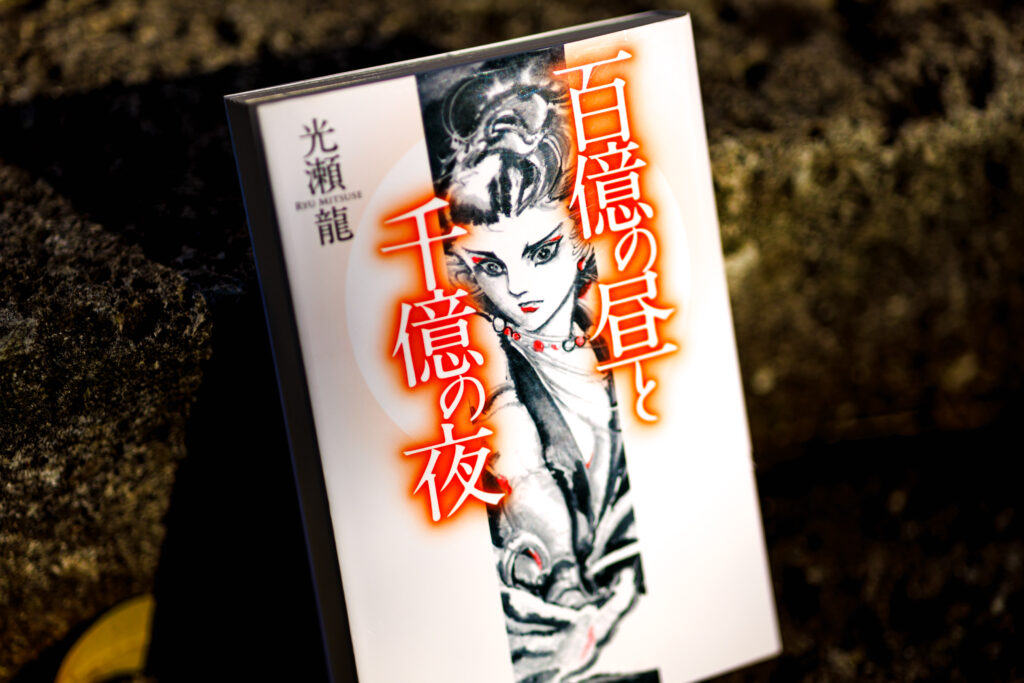
Professor Yoshikazu Kikawada of the Faculty of Science and Technology specializes in Volcanology. He talks about the excitement of volcano research, which is an essential part of earth science, as well as the fascination of Mt. Kusatsu-Shirane—a traditional focus of Sophia University’s research since the 1960s.
Japan has more than 100 active volcanoes. An active volcano is defined as “a volcano that has erupted within the past 10,000 years and is currently active.” Formerly, there were also the terms “dormant volcano” and “extinct volcano,” but today there are only two types of volcanoes: active and non-active.
In order to accurately and comprehensively understand the status of a volcano, two kinds of observations are necessary: physical and chemical. Physical observations, for example, use instruments to measure crustal deformation or the occurrence of earthquakes in the vicinity of a volcano, and in many cases these observations can be made remotely on a continuous basis.
On the other hand, chemical observation, which is my specialty, is a method of observation that involves collecting and directly examining volcanic gases that have separated from the magma and risen, as well as geothermal spring water formed when these gases dissolve in groundwater.
Researchers usually study the same volcano for many years, so they are like family doctors for volcanoes, who are able to notice even small changes in the composition of geothermal spring water or crater lake water. Sophia University has been chemically observing Mt. Kusatsu-Shirane since the 1960s, and my laboratory has carried on this work.
Changes I perceive every time I visit the mountain–the Earth is alive

Geothermal spring water, volcanic gases, and volcanic ash are collected from the surface of a volcano, but an analysis of their chemical composition can tell us a lot about the inside of that volcano.
For example, as explained earlier, geothermal spring water is composed of volcanic gases separated from magma and dissolved in groundwater, so examining the chemical composition of the geothermal spring water will also allow us to study changes in the magma’s condition. Even if we cannot directly observe the magma, we can obtain information about the magma deep underground by analyzing the geothermal spring water.
The most exciting part of this research is, after all, being able to experience firsthand the Earth as a living organism. Visiting Mt. Kusatsu-Shirane every season, I notice all sorts of changes, such as variations in water quality of the springs and the expansion of the area of the volcanic gas fumarole zone.
In everyday life, we tend to think of the Earth, or the land beneath our feet, as a changeless presence, but in fact, inside it, many things are in dynamic motion. Volcanology includes aspects of disaster prevention research, such as the prediction of eruptions, but the essence of volcanology as an academic discipline is Earth science–the study of the Earth.
Creating a wider observation model will help in predicting eruptions
There are volcanoes all over the world that are well suited for chemical observations, including Mt. Kusatsu-Shirane, where there are many gas fumaroles and geothermal springs, as well as crater lakes.
Even people who are not researchers like hot springs and volcanoes, so if there is a way to involve these people in observations, we would be able to collect even more meaningful data. Based on that idea, I am currently working on the development of a simple and efficient method for analyzing the composition of substances collected from volcanoes.
If there were a safe, reliable, and low-cost method that anyone could use to analyze volcanoes, it would be possible, for example, for those in charge of mountain trail management to collect and examine geothermal spring water samples once a month or so. This kind of daily observations of volcanoes will also lead to the accumulation of observation data during calm periods and lead to the early detection of changes in volcanic activity.
It has become a dream of mine to create a broad-based observation model that allows for the participation of the general public.
The book I recommend
“Hyaku-oku no Hiru to Sen-oku no Yoru”(10 Billion Days & 100 Billion Nights)
by Ryu Mitsuse, Hayakawa Publishing Corporation

This is a science fiction novel that I have loved since junior high school. It is a magnificent story with Plato, Shakyamuni, King Asura, and others serving as the protagonists. After reading it, I was left with the deep philosophical questions of what governs this world and what is the nature of the universe.
-
Yoshikazu Kikawada
- Professor
Department of Materials and Life Sciences
Faculty of Science and Technology
- Professor
-
Graduated from Department of Chemistry, Faculty of Science and Technology, Sophia University and completed his M.A. in Chemistry at the university’s Graduate School of Science and Technology. After working for Dowa Mining Co., he entered the doctoral course in Chemistry at the Graduate School of Science and Technology, Sophia University and later withdrew. Doctor of Science. Worked as a Research Assistant, Lecturer, and Associate Professor at Faculty of Science and Technology, Sophia University in 1996, and has been in his current position since 2016.
- Department of Materials and Life Science
Interviewed: November 2022